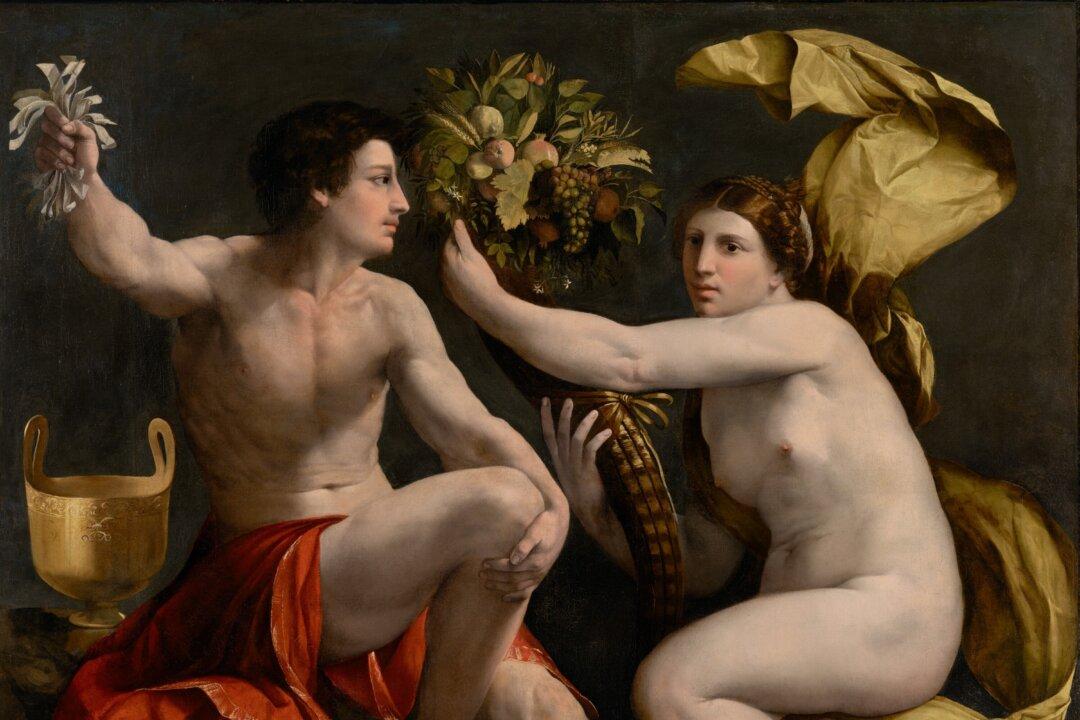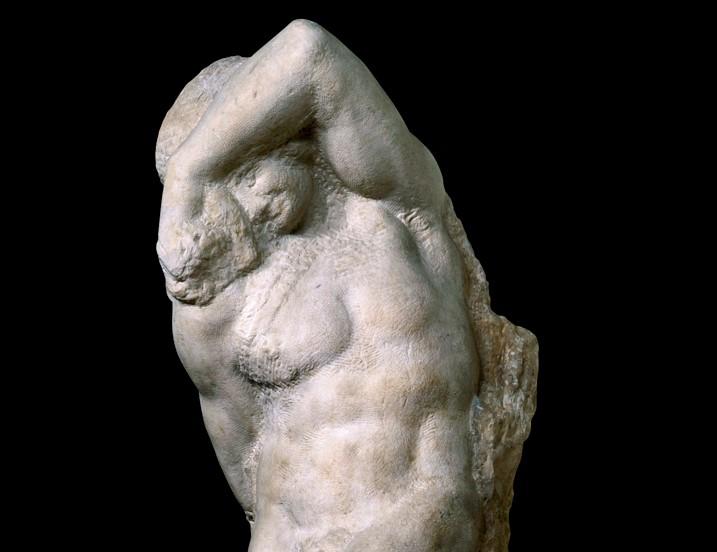The story of the Sampo is told in the Finnish epic “Kalevala,” which was compiled from the poems and songs of Finnish oral traditions. The Sampo was a powerful and mysterious device that had a lid of many colors, three mills on its sides, and produced endless fortune. Outside of this description, however, no one really knows exactly what the Sampo was or what it looked like.
The story of the Sampo found its beginning with a bard and sage as old as the earth itself, Vainamoinen. Vainamoinen was washed up on the shores of the evil land of Pohjola. This land was also the evil counterpart of the land of heroes, called Kalevala, from which Vainamoinen came and where the Finnish epic gets its name.
Pohjola’s ruler, the evil witch Louhi, found the hero Vainamoinen on the shore and nursed him back to health. In return for her kindness, Louhi told the hero that she wanted something which would create for her an endless source of wealth—the Sampo. Vainamoinen agreed to find her a Sampo, but he knew of only one being with the ability to create such a thing: the eternal hammerer, Ilmarinen.
Ilmarinen was said to use his tools to hammer the firmament into shape. Vainamoinen tried to convince Ilmarinen to help him, but the hammerer had no intention of helping the evil land of Pohjola. In order to obtain Ilmarinen’s help, Vainamoinen summoned a storm, which carried Ilmarinen to Pohjola.
Ilmarinen was treated very well in Pohjola. He was even offered the hand of Louhi’s beautiful daughter if he would make the Sampo. These kindnesses made him agree to undertake the task.
At first, while trying to make the Sampo, Ilmarinen produced only objects that caused harm. But after summoning the wind to work the bellows, he was able to forge the Sampo in three days.
Ilmarinen completed and presented the Sampo to Louhi, who, with access to endless wealth—grain, salt, and gold—was excited. She locked up the Sampo inside a mountain. Finished with his task, Ilmarinen went to accept Louhi’s daughter’s hand in marriage, but she refused.
Years passed and Pohjola prospered, but Vainamoinen and Ilmarinen suffered. Fed up with their struggles, the two decided to take back the Sampo for themselves. They recruited Lemminkainen, a hero noted for his beauty, to help them on their journey.
When they approached Louhi, they requested half of the Sampo’s wealth or they’d take it by force. Louhi was outraged and summoned her dark forces to battle.
Vainamoinen, however, was a wonderful musician and lulled her evil minions to sleep with his music. The three heroes were able to take the Sampo without anyone noticing. In their escape at sea, however, Lemminkainen asked Vainamoinen to sing a celebratory song. Vainamoinen, believing it too early to celebrate, refused to sing. But Lemminkainen was unable to control his excitement and sang loudly and badly, so loudly that he woke up Louhi and her dark forces.
Louhi and her troops followed the three heroes out to sea. In the struggle, as Louhi tried to take back the Sampo, it dropped into the sea and was forever lost.

“Forging of the Sampo,” 1893, by Akseli Gallen-Kallela. Oil on canvas, 78.7 inches by 59.8 inches. Ateneum, Helsinki. Public Domain
‘Forging of the Sampo’
Akseli Gallen-Kallela was a Finnish painter during the 19th century. He traveled extensively and learned a great deal from the artistic styles of French realism and symbolism. He was able to use the lessons gained from these styles to express his love for this own culture by illustrating stories from the “Kalevala.”In “Forging of the Sampo,” Gallen-Kallela depicted multiple figures creating the Sampo. The painting shows workers in a wooded environment of muted browns and greens contrasted with intense oranges and yellows.
In the foreground are two figures to the left and center of the composition who look into an opening that contains a fire. Also in the foreground, smithing tools sit on a trunk stump.
The figure in the center looks intently at what is presumably the unfinished Sampo, which remains concealed behind a structure built from wood and rock that contains the fire. The other figure also looks intently into the fire and appears to be using a very large branch to possibly adjust the Sampo’s position in the fire.
The line of sight of these two figures leads us to the standing log at the right of the composition. The standing log leads us up to the long log at the top of the structure, and this leads us all the way back to another group of figures at the top left of the composition.
These figures at the top left work together to pull down another log, which is tied to a branch. This log appears to work the bellows in order to blow air into the fire and intensify the heat, the heat needed to make the Sampo produce its riches.
A Harmonious Culture Creates Wealth
It’s interesting how the Sampo is created and lost: It is created through harmony and lost in discord.Gallen-Kallela depicted the elements coming together for the sake of creating the Sampo. Too much or too little of any element, as was the case when Ilmarinen had too little air and too little heat from the fire, causes the Sampo to produce harmful things instead of riches.
Gallen-Kallela also depicted people working in harmony with these natural elements. Here, I believe, lies the beginning of the endless wealth represented by the Sampo. Endless wealth comes from working with one another and with nature. Going to extremes and working against each other and against nature brings about the opposite result from that intended.
Maybe the two painted figures in the foreground represent Ilmarinen and Vainamoinen. It’s interesting that Vainamoinen enhances the environment with music and Ilmarinen shapes the environment with his hammer, and that both of these characters are necessary for the creation of the Sampo.
Let’s delve a little deeper into what this might mean. I see Vainamoinen as a representation of music and Ilmarinen as a representation of visual art, using tools to fashion his creation. The representations of art and music come together to create the Sampo, a source of endless wealth. I see art and music as the embodiment of culture, and culture is what harmonizes a group of people around certain ideas and beliefs. So, it is a harmonious culture that brings about endless wealth.
But for what purpose does culture bring about endless wealth? When culture is used to benefit evil, as it was in Pohjola, evil prospers. In other words, when culture is used to encourage and legitimize evil, evil will be normalized and will increase harm to all. Culture can be co-opted by evil.
How do the heroes try to take culture back from Louhi, its evil possessor? First, Vainamoinen and Ilmarinen invite a third member to their party: Lemminkainen, a representation of beauty. So, now art and music have beauty to help them, and these three representations begin a journey to take back culture to Kalevala, the land of heroes.
Interestingly enough, the three initially demand only half of the wealth created by the Sampo from their evil counterpart. Why do they require only half? Is it because if evil were completely without sustenance and disappeared, perhaps the heroes would lose their roles as those who struggle against evil?
When evil denies them their wish, they lull evil to sleep with their music and take the Sampo back.
Music, art, and beauty are capable of lulling evil to sleep. With evil asleep, culture—and its endless wealth—can be used for the purposes of good. When culture is built on the qualities that come with being a good and upright hero, these qualities are the ones that will be normalized and will increase the good of all.
But evil can always find its way back into culture. Beauty can be used to make otherwise harmful things pleasing to the senses. When beauty lacks wisdom, that is, when a culture looks good on the surface but is not in true harmony or acts inappropriately, evil can find its way back in, and endless wealth risks being lost forever.
How will we approach the evolution of our own cultures? Will we construct a culture fashioned on the righteous hero’s journey toward the harmony between people and nature? Or will we allow the divisiveness of evil to run rampant and destroy all good things in its wake?
Art has an incredible ability to point to what can’t be seen so that we may ask “What does this mean for me and for everyone who sees it?” “How has it influenced the past and how might it influence the future?” “What does it suggest about the human experience?” These are some of the questions I explore in my series “Reaching Within: What Traditional Art Offers the Heart.”
Eric Bess is a practicing representational artist.





